Este post também está disponível em:
Português
English
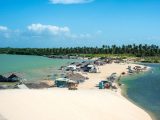
Tatajuba is a beach located in the municipality of Camocim, 390 km from Fortaleza.
It is one of the most charming beaches on the west coast of the state of Ceará.
In the 1980s, the community of Tatajuba was buried by the dunes, but it did not keep away the fishing families who rebuilt a new village, known as Nova Tatajuba.
The population has lived integrated with nature through their ways of life since the 19th century.
Due to its geographical location and difficult access, possible only by 4×4 cars, Tatajuba remains almost untouched, in an ecosystem formed by many fixed and mobile dunes, mangroves, lagoons, cliffs, permanent lagoons and interdunar lagoons, connecting to the sea at some times of the year.
The traditional community has lived integrated into this environment through their ways of life since the 19th century and today welcomes tourists and visitors through community tourism.
See also about kitesurfing spots in Tatajuba.
On this beach of blue-green sea, with lush coconut groves and dunes sculpted by the action of the wind, the main places of visitation are the Funil dune and the Torta lagoon.

The Funil dune is a wall of sand where sandboarders and buggy riders have fun on this natural wall, recomposing their energies in the Torta lagoon in nylon hammocks set up on the shore of the lagoon, gently touching the water in a relaxing feeling of freshness.
Videos about Tatajuba in Ceará
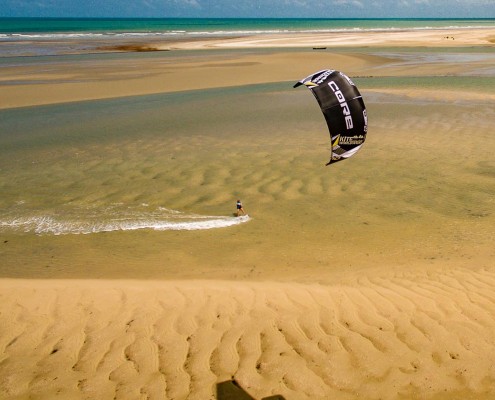

Kitesurf em Tatajuba no Ceará
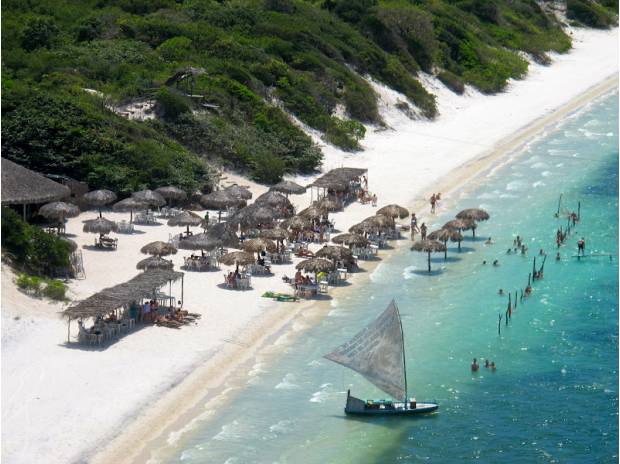
Tatajuba no Ceará
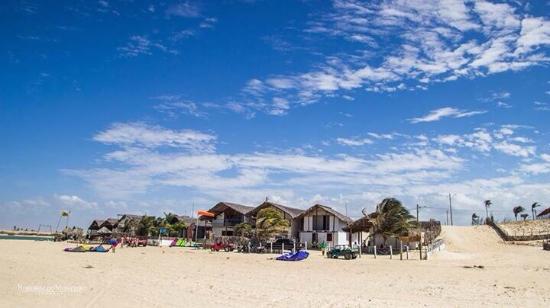
Passeios em Tatajuba no Ceará
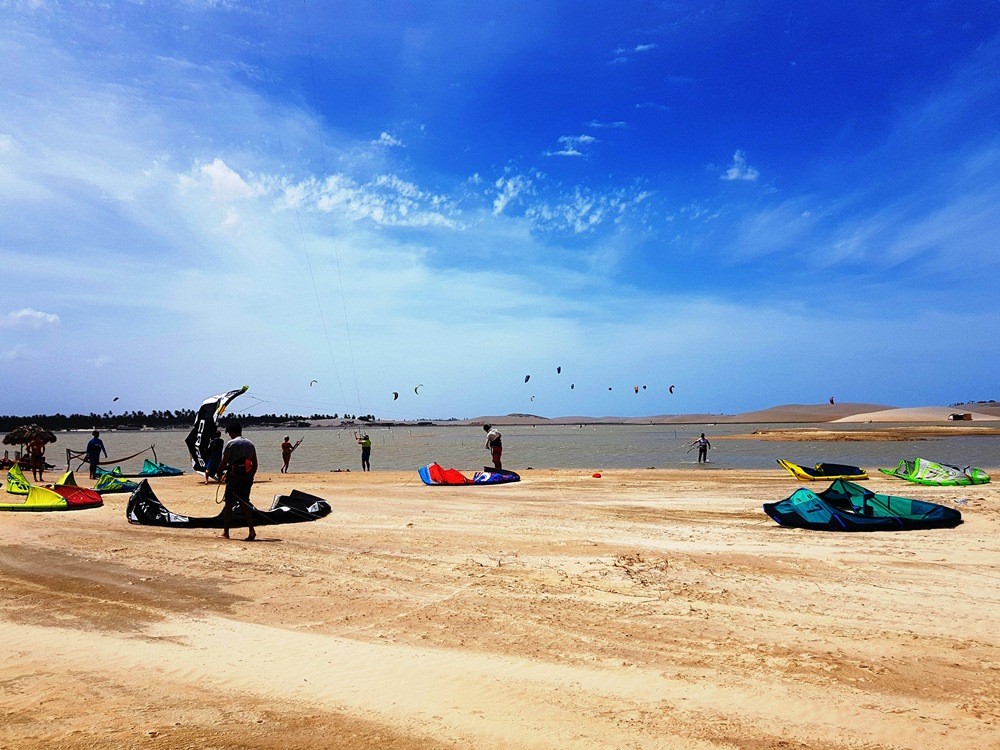
Tatajuba - como chegar04:49
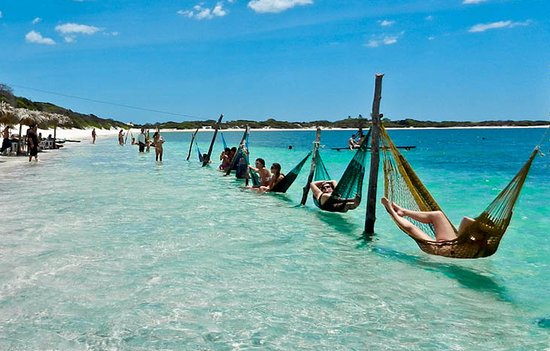
Jericoacoara - como chegar04:00
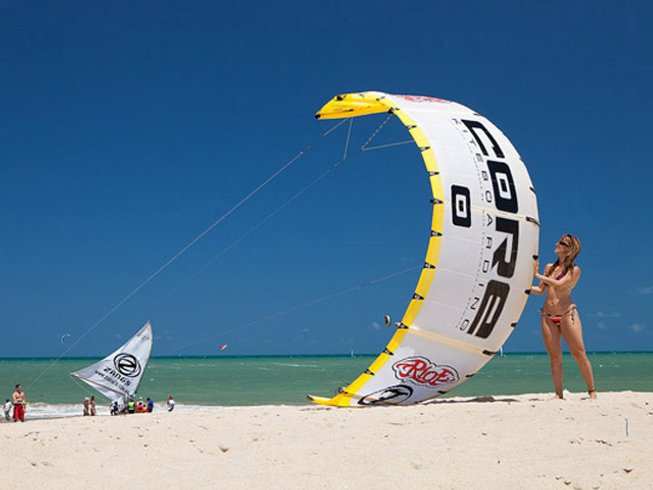
Kitesurf em Tatajuba
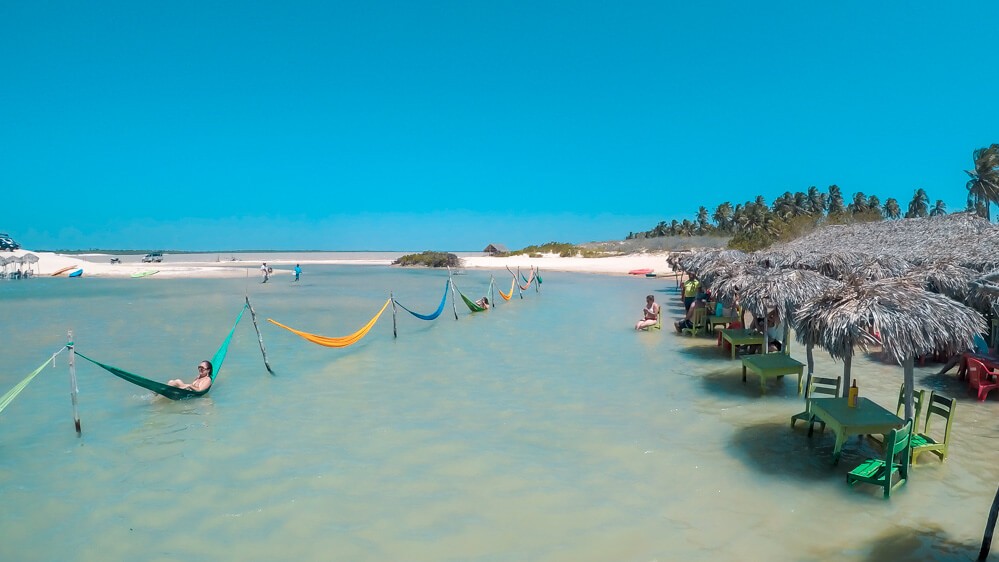
Lagoas de Tatajuba03:04
How to get to Tatajuba Beach
There are three ways to get to Tatajuba.
The first is to go from Fortaleza to Sobral by BR 222 or by the Sol Poente road and from there to Granja by CE-362.
From there, just take a tarmac road to the district of Parazinho.
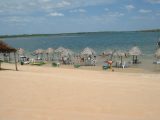
From this point onwards, it is only possible to continue using a tractor or buggy, as the road to Tatajuba is very sandy.
The second option is to follow the same route to Jericoacara.
After the town of Gijoca, at the fork that goes to Jeri, you take the other road and follow the carriage road to the Settlement of Guriu and go along the beach, if possible with a 4X4 car.
The third option is to go to Camocim, cross the river Coreaú by ferry and go by buggy along the beach to Tatajuba.
Tip! If you are going with a small car, the second option is more interesting. If you go by bus, the third one is the best. If you go with a 4×4 car, the first two are relevant.
Where to stay
The Community Association of Tatajuba Residents (Acomota) is part of the Ceará Community Tourism Network (Tucum) and articulates locally the accommodation of visitors in native houses and home inns;
Tourism and Travel Guide to Tatajuba Beach in Ceará



















